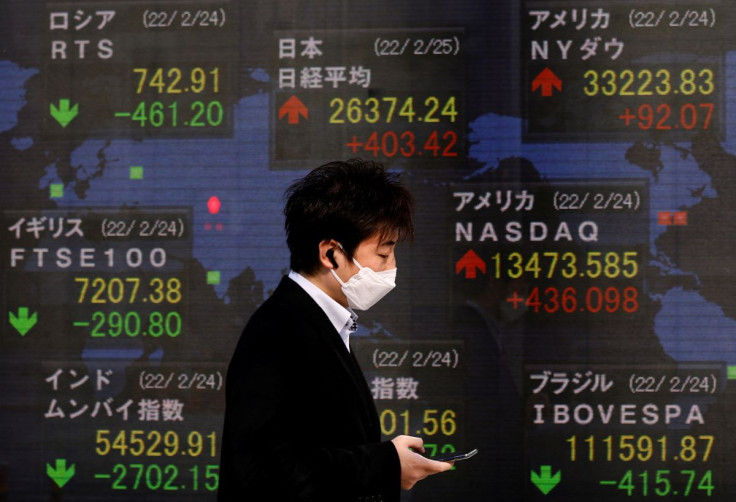Second Half Starts With More Declines In Stocks, Yields

The second half of the year started with more declines in global stock indexes on Friday as recession concerns that have built in recent weeks also dragged down Treasury yields and metals.
U.S. Treasury yields tumbled on market expectations that U.S. consumer prices will come down close to the Federal Reserve's inflation target.
The yield on 10-year Treasury notes fell 17.9 basis points to 2.795%, while the two-year yield, which typically moves in step with interest rate expectations, slid 19.4 basis points to 2.733%. Both were at four-week lows.
MSCI's world stocks index, which on Thursday notched its biggest percentage decline for the first half of the year since its 1990 creation, was down 0.5%, while the U.S. benchmark S&P 500 was also down 0.5%. The S&P 500 closed out its worst first-half since 1970 on Thursday.
"We're starting off the quarter the way we left off, with uncertainties and with a bear grip that continues to intensify," said Peter Cardillo, chief market economist at Spartan Capital Securities in New York.
But he expects stock market performance to improve overall in the second half of the year. "We're going to see more green days in the second half than we'll see red," he said.
The S&P 500 last month confirmed it was in a bear market.
The Dow Jones Industrial Average fell 146.6 points, or 0.48%, to 30,628.83, the S&P 500 lost 17.62 points, or 0.47%, to 3,767.76 and the Nasdaq Composite dropped 66.48 points, or 0.6%, to 10,962.26.
The pan-European STOXX 600 index lost 0.02% and MSCI's gauge of stocks across the globe shed 0.54%.
Asia had thudded lower overnight too, with the heaviest fall in Taiwan where the growth-sensitive benchmark index slid more than 3% to its lowest since late 2020.
Data on Friday showed manufacturing production in the euro zone fell for the first time last month since the initial wave of the coronavirus pandemic in 2020, while inflation numbers hit another record high.
In the United States, manufacturing activity slowed more than expected in June, with a measure of new orders contracting for the first time in two years, more evidence the economy was cooling amid aggressive monetary policy tightening by the Federal Reserve.
Copper prices slumped to their weakest in 17 months as investors worried about a possible recession hitting demand for metals.
Three-month copper on the London Metal Exchange had eased 3.1% to $7,999 a tonne after dropping to its lowest since early February 2021 at $7,955.
U.S. crude rose 1.9% to $107.77 per barrel and Brent was at $110.90, up 1.72% on the day.
The dollar was up on Friday, having just scored its best quarter since 2016. Economic uncertainty has kept it supported even as yields have retreated.
The dollar index rose 0.525%, with the euro down 0.73% to $1.0406.
Bitcoin, which suffered its biggest quarterly drop on record over the three months to the end of June, last fell 3.28% to $19,272.05.
© Copyright Thomson Reuters 2024. All rights reserved.




















